Brewers attendance drop is among the steepest in MLB, and the chief cause might not be what you think
Even as the smallest market in Major League Baseball, the Milwaukee Brewers have routinely drawn crowds like a big-timer.
They've been 10th or higher in MLB attendance in each of their competitive seasons: 2017, 2018, 2019 and even 2021, when COVID-19 meddled with ballpark capacities for the first half of the year.
But a gaze across the seating bowl during games this year will catch a lot more forest green than usual.
The Brewers entered Wednesday 14th in MLB, drawing 30,359 fans per game — a drop of 15.9% compared to 2019 (the last season of "normal" attendance regulations throughout the year) and 14% compared to 2018. The former number is the seventh-biggest drop in MLB and the latter is ninth, outpacing most teams that have maintained a similar plane of competitiveness in that window.
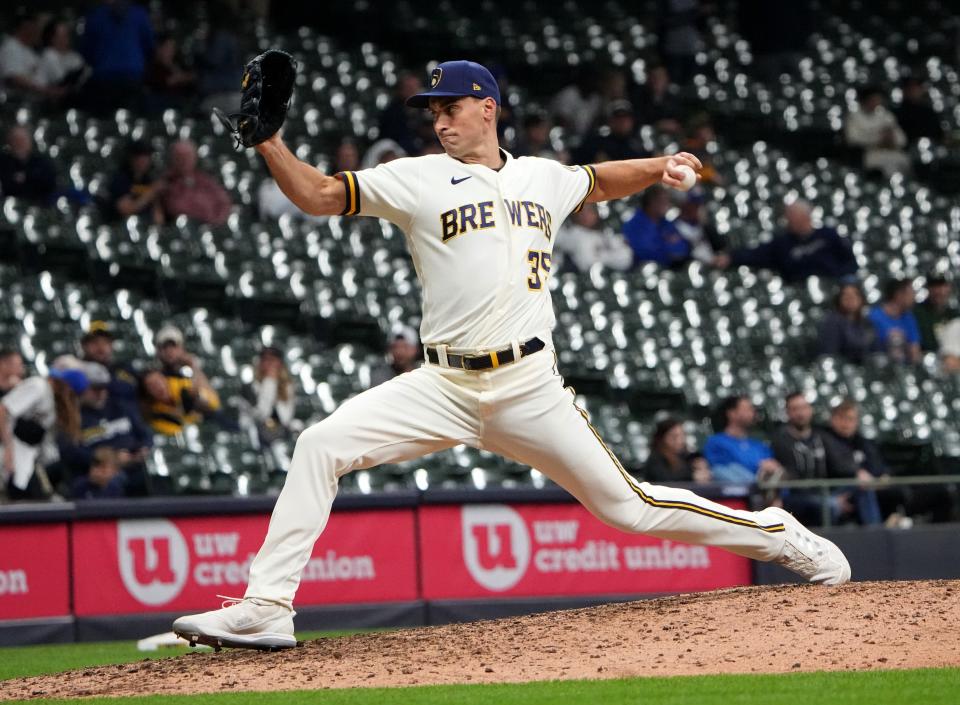
Major League Baseball, still recovering from the COVID-19 pandemic and already seeing a decline in attendance each year from 2015 to 2019, has pushed about 5.2% fewer fans through its turnstiles this year than in 2019 and 6.7% fewer than 2018.
So why is Milwaukee worse off than most MLB teams?
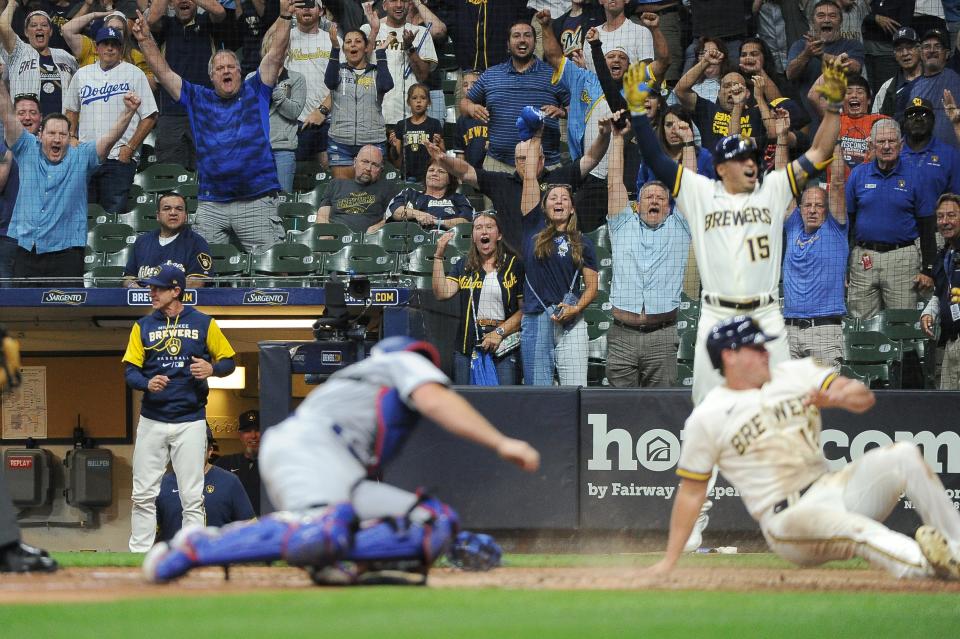
With the Chicago Cubs headed into town for a three-game series and Milwaukee still in the playoff hunt, Milwaukee would usually be on the precipice of three weekend sellouts. But 2022 is different.
More: We asked readers why they went to fewer Brewers games, and these five reasons kept coming up
Brewers president Rick Schlesinger pointed out that the current projection between 2.5 million and 2.6 million fans for the year would still put the Brewers in the top half of baseball.
"Any comparison to our 2019 season where we drew more than 2.9 million fans (after finishing in 2018) one game shy of reaching the World Series will necessarily fall short in light of the disruptions to our business caused by the pandemic, restricted attendance and a delayed start to the 2022 season."
The 2019 season marked the fourth-highest attendance in franchise history, so to use it as the initial bar seems a tad unfair. But why would Milwaukee see bigger declines than elsewhere?
Is the price to attend a Brewers game too high?
Those noticing the attendance decline might immediately point to low-hanging fruit when considering a team's drop in attendance: Either the team just isn't as fun to follow or the prices to attend have become too high.
For now, let's set aside the inevitable snark over the Brewers' recent slide as a crowd deterrent. Although not running away with the division as they did in 2021 and not yet engaged in the high-stakes thrill rides that were the Septembers 2018 and 2019, the Brewers have maintained 8-12 games above .500 for most of the year and remain one of seven bona fide playoff contenders for six National League playoff spots.
And while prices for any big-league ballpark experience are debatably too high for an average family, Milwaukee's median prices for tickets and parking would rank 11th-cheapest in baseball, behind the Royals, Angels, Reds, Phillies, Marlins, Tigers, Orioles, Rockies, Twins and Cardinals.
That median cost for a family of four with tickets and parking: $163.60. Across MLB, you'll find a wide range, with the Red Sox at the top of that list ($346) and the Royals at the bottom ($113).
Theoretically, a family of four can even attend most Sunday Brewers games for as low as $39 plus fees, with $6 tickets to Bernie's Terrace and $15 advance-pay general parking.
Concessions at the field do come at a high cost, though American Family Field allows for fans to bring in sealed non-alcoholic beverages and small food items.
According to data gathered by Chris Hartweg of the independent website Team Marketing Report based in Chicago, the lowest available cost for a beer at AmFam ($9) was more expensive than all but seven other MLB stadiums, a soda ($6) was more expensive than all but six other stadiums and a hot dog ($6.75) was more expensive than all but three other locations.
Then again, ESPN's data on a per-ounce basis places the Brewers among the most affordable 10 to 12 teams for domestic light beer, soda and water.
The average fan might not see one particularly big factor
Schlesinger pointed to something else most fans don't see.
"One material factor that differentiates us from other markets is group sales," he said. "In a normal year, we would sell approximately 600,000 group tickets. This year, we will finish at approximately 400,000. If we were experiencing an average year of group sales, our attendance rank would be in the right around 10th in all of baseball, which is consistent with a normal season for us."
The Brewers have had as much success with group sales as anyone in baseball, thanks in part to the certainty of staying on schedule on account of a retractable roof. But with businesses still operating remotely or on a hybrid basis, most companies aren't seeking group outings.
"In addition, there are companies that are still not 100% comfortable organizing groups to be in large-capacity events," Schlesinger said. "The good news is that we are seeing a shift in these trends. Fans are more comfortable now visiting large-capacity venues, and even for companies that continue to work remotely, they are placing an even higher value on gathering their employees together for social outings."
Schlesinger said season-ticket packages and individual sales remain strong, but the late start to the 2022 season because of baseball's labor dispute also hurt the ticket office, delaying the start of individual ticket sales. The Brewers were slated to open the season at home with six games (all since relocated elsewhere in the schedule), one of 11 teams that were expected to start the season with multiple home series.
Did the pandemic hit smaller sports markets harder?
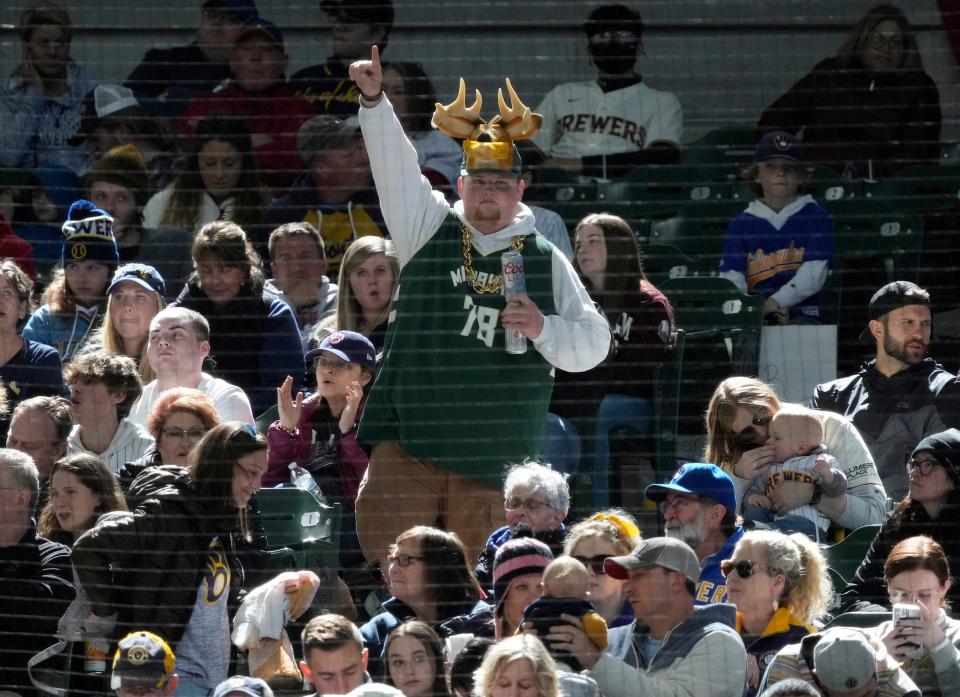
Cleveland, a team in first place in the American League Central, has drawn just 17,191 per game this year. Minnesota, the team hot on Cleveland's heels, is at 22,590. Both have open-air stadiums, so it stands to reason attendance might fluctuate thanks to unpredictable spring weather more so than in Milwaukee. Their declines outpace even Milwaukee.
Cleveland has lost 21.9% compared to 2019 and a staggering 29% of fans compared to 2018, even though this year's team is only slightly off the pace of winning that the 2018 and 2019 teams enjoyed.
Minnesota's decline is 20.2% compared to last year (just 8% compared to 2018), though the 2019 team won 101 games and surely drew well as a result. The 2018 team finished below .500.
Other "small" markets such as Arizona (25.2% drop from 2019), Cincinnati (17.8%), Kansas City (12.5%) and Pittsburgh (11.7%) outpace the average, but that's not universally consistent. Tampa Bay (5.3%), albeit working with smaller total numbers of fans overall, hasn't declined as rapidly, while Baltimore and Detroit have gained fans compared to 2019 (though both drew poorly that season as the two worst teams in baseball and both are down compared to 2018).
Oakland, embroiled in a possible relocation saga and other issues deflating fan interest, has seen the largest fan decline compared to 2019 at 54%, miles ahead of second-worst Arizona.
The Cubs are bad. That should be a good thing, right?
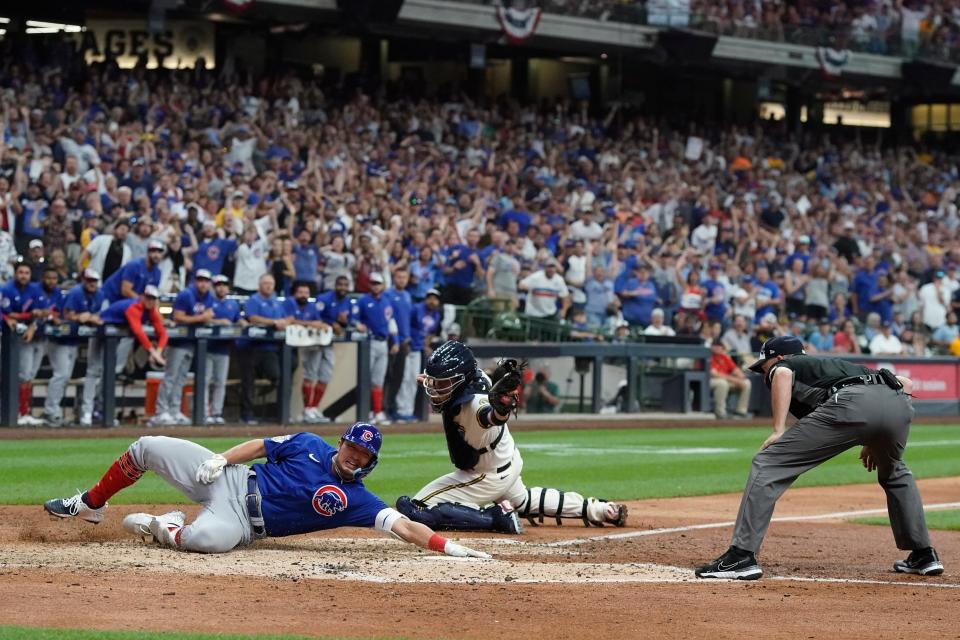
It wouldn't be uncommon for Cubs fans to take some credit for the Brewers' successful attendance showing, even if their presence hasn't produced a significant impact on Milwaukee's top-10 attendance status. Trust us, we checked.
But despite Brewers fans happily embracing a down season for Chicago, it doesn't help at the ticket office that the Cubs have been a non-factor in the National League Central standings this year. In six games against Chicago at American Family Field, the Brewers have drawn an average of 34,450 fans — among the best crowds of the season, but not the boon they've been in other years.
In 2019, a year when Chicago was a winning ballclub (though not a playoff team), Cubs games brought in 40,377 fans per contest.
Are the Brewers just not as fun as before?
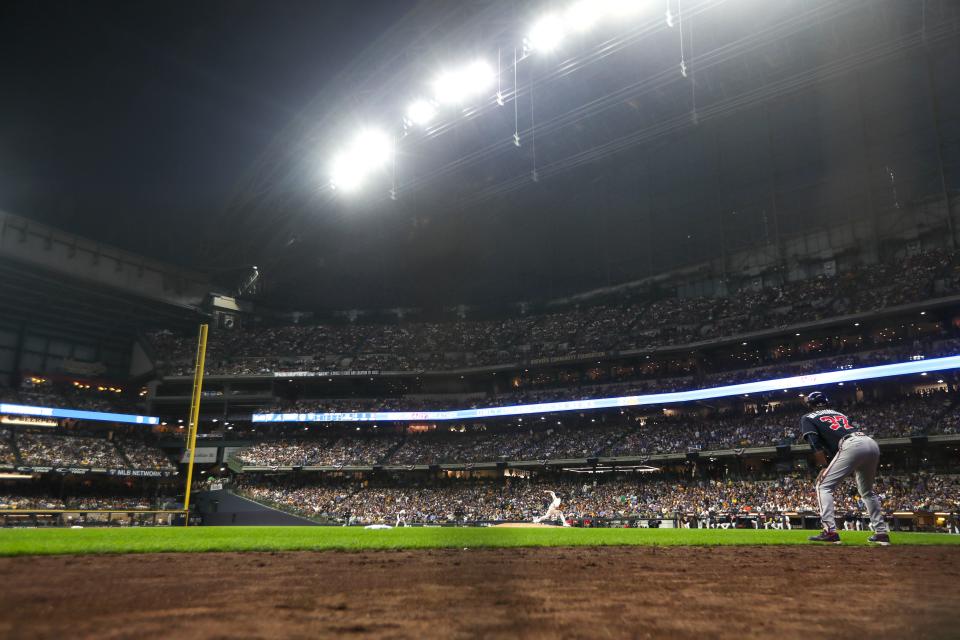
The Atlanta Braves saw skyrocketing attendance in the early 1990s when the team rose to prominence, then again with the opening of Turner Field in 1997, but also a steady decline in the years that followed, even as the Braves went to the playoffs 11 straight years and 14 out of 15.
Have the Brewers started to bore fans with success? Or, is it simply a team that can't inspire the same fervor as past years, particularly because this year's team came in as the odds-on favorite to win the division, and yet the Brewers haven't played well enough to make a playoff berth certain?
"We don’t believe that extended patterns of winning dials back the enthusiasm; we do think it dials up the expectations," Schlesinger said, adding that in past years, such as 2008, simply contending was enough to raise the temperature of Brewers fever in Milwaukee, and that era has passed.
"Have expectations changed? Sure, both for our fans and for the organization," he added. "Making the postseason is a major accomplishment, but we have higher aspirations. Success brings higher expectations, and if we can hand pick a challenge to face, that’s one we’ll take any day."
Nine teams have seen attendance gains from 2019, including squads in Toronto, San Diego, Atlanta, Seattle and the White Sox in Chicago, so even in the post-COVID environment, it's possible to ward off declining attendance. Most of those increases can be explained by team improvement.
What can the Brewers do to get fans back?
Schlesinger said upgrades to American Family Field, including the X-Golf addition to the club level in left field, will hopefully help turn the tide. He said they're doing their best to listen to fans.
Schlesinger pointed to a beefed-up food and beverage delivery service at the stadium as an improvement, plus the residual benefit of reconnecting with the community in a post-COVID landscape.
"We have had more opportunities to connect players with fans directly this year, whether that’s though community appearances or initiatives like we have with players picking up bar and restaurant tabs around town, and we will continue to bring those engagement experiences back into the daily mix," he said. "We are re-imagining our ticket discount programs, exploring postgame events and examining our all fan giveaways beyond the traditional bobbleheads."
If group sales are indeed the biggest culprit, then the situation figures to slowly correct itself as businesses return to in-person events.
Another deep playoff run wouldn't hurt, either.
JR Radcliffe can be reached at (262) 361-9141 or jradcliffe@gannett.com. Follow him on Twitter at @JRRadcliffe.
Our subscribers make this reporting possible. Please consider supporting local journalism by subscribing to the Journal Sentinel at jsonline.com/deal.
DOWNLOAD THE APP: Get the latest news, sports and more
This article originally appeared on Milwaukee Journal Sentinel: What's to blame for Brewers big attendance drop in 2022?

